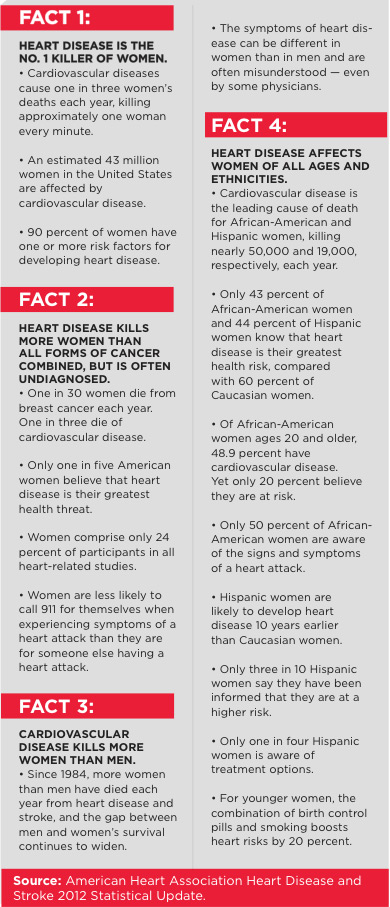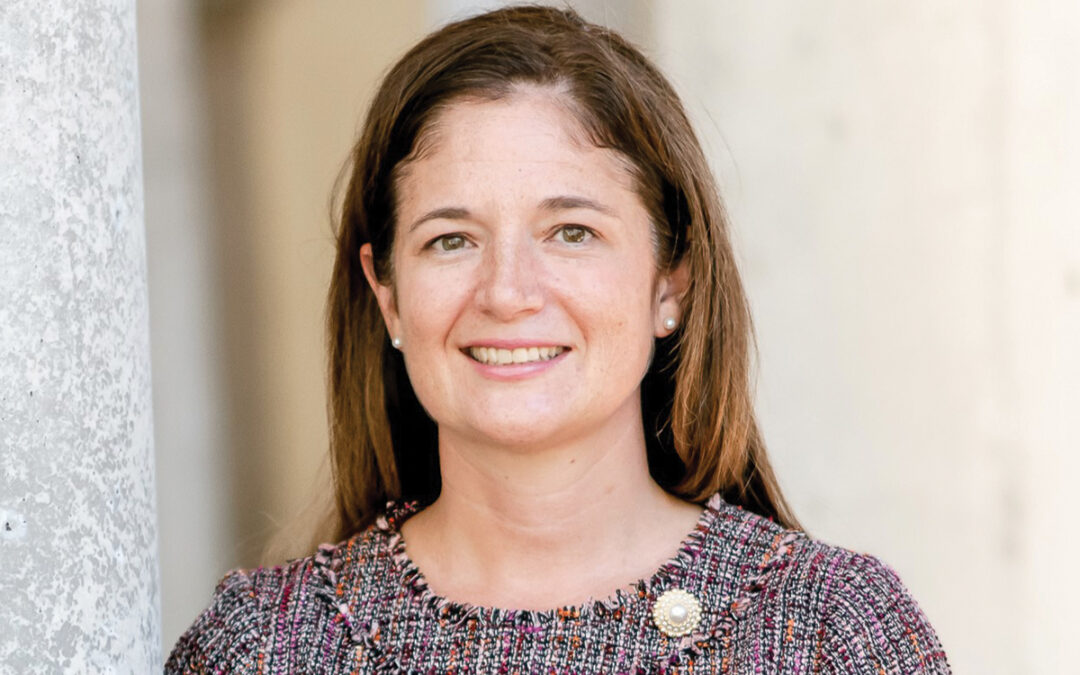From the American Heart Association

More women die of cardiovascular disease than from the next four causes of death combined, including all forms of cancer. Many cardiac events in women could be prevented if they made the right choices for their hearts involving diet, exercise and abstinence from smoking. A heart attack occurs when the blood flow to a part of the heart is blocked, usually by a blood clot. If this clot cuts off the blood flow completely, the part of the heart muscle supplied by that artery begins to die.
SIGNS OF A HEART ATTACK
1. Uncomfortable pressure, squeezing, fullness or pain in the center of your chest that lasts more than a few minutes or goes away and comes back.
2. Pain or discomfort in one or both arms, the back, neck, jaw or stomach.
3. Shortness of breath with or without chest discomfort.
4. Other signs such as breaking out in a cold sweat, nausea or lightheadedness.
5. As with men, women’s most common heart attack symptom is chest pain or discomfort. But women are somewhat more likely than men to experience some of the other common symptoms, particularly shortness of breath, nausea/vomiting and back or jaw pain.
6. If you have any of these signs, don’t wait more than five minutes before calling for help. Call 911. Get to a hospital right away.
RISK FACTORS OF HEART DISEASE
While you can’t change things like age, ethnicity and family history, the good news is that even modest changes to your diet and lifestyle can improve your heart health and lower your risk by as much as 80 percent.
CHOLESTEROL
High cholesterol is not good for you; it can increase your risk for heart disease or heart attack. This happens because cholesterol and other fats can build up, narrow arteries and then be blocked by a blood clot or other particle. This causes the heart or brain to lose its blood supply, resulting in a heart attack. You should have your cholesterol levels checked regularly because with the help of your health care professional, high cholesterol can be controlled.
Dr. Dristen Plastino shares her story
Associate professor of obstetrics and gynecology with the University of Texas Health Science Center at San Antonio and a practicing ob/gyn, Dr. Kristen Plastino is used to seeing the inside of a hospital, but she’s typically not the patient. However, at the age of 41, Dr. Plastino found herself on the receiving end of cardiovascular care at University Hospital. After an otherwise picture-perfect day in San Antonio spent at her son’s baseball game, Dr. Plastino was packing up to take her children home and began to feel classic symptoms of a heart attack: chest pain, nausea, sweating. Ignoring what she knew was a heart attack, Dr. Plastino drove herself home. Then her husband drove her to University Hospital. An EKG at the hospital confirmed she was having a heart attack. Dr. Plastino underwent angioplasty, where doctors inserted a tiny balloon into her coronary artery to restore blood flow. She later received four stents to open up her arteries.
Today, Dr. Plastino reminds women not to ignore the signs and to call 911 at the first onset of heart attack symptoms. She admits that not seeking emergency care sooner could have cost her her life, so she feels blessed to have the opportunity to share her story with others. She shares her story often and has become a dedicated advocate of the American Heart Association, serving on the local board of directors for AHA and as the 2013-2014 chair of the Go Red For Women Passion Committee. As chair, Dr. Plastino has worked closely to bring the message of good nutrition and heart health to patients, her community and teachers and children at area schools.
“I am making it my mission to ensure other women know their risks, the warning signs and the importance of calling 911,” she says.










0 Comments